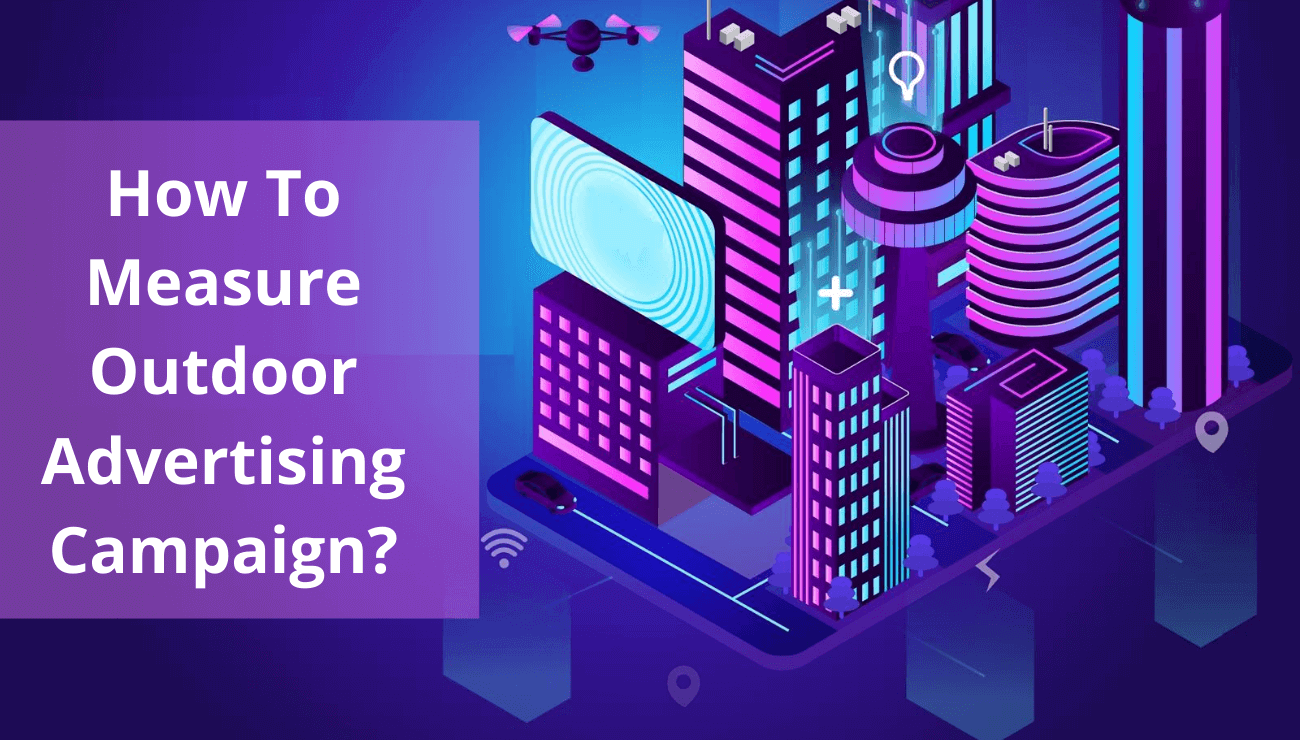How To Measure Outdoor Advertising Campaign

When it comes to outdoor advertising campaigns, it may not be clear as to how an ad’s performance is measured compared to other forms like the Internet. As the popularity of outdoor advertising rises, so does the demand for measurement capabilities that can assess just how impactful your advertising has been, and who has seen it. This enables you to adjust your future advertising plans in line with performance to expand your reach and increase your impact.
Whether you’ve set up a campaign already, or whether you’re planning future successful campaigns, the measurability of out-of-home media is probably a question on your mind. With this confusion, it’s common for people to ask, “How is outdoor advertising measured?”
OOH advertising often uses demographics and psychographics to measure an ad’s performance. The good news is there are sophisticated measurement capabilities available. Here are some of the key components that are used to create impactful insights for measuring OOH reach and engagement.
Opportunity to Contact
Market research company Esomar uses the term Opportunity to Contact (OTC). This is a metric for measuring how many people will potentially walk past your advertisement and see it. This takes into account survey data and mobility modeling. But there’s a further element to this: Visibility adjusted contact (VAC). This refers to the number of people who actually saw the advertisement during the campaign.
Once we have the potential audience numbers for a panel, how can you be sure that people have seen it?
Edge1 advanced OOH measurement systems incorporate algorithms built around extensive eye movement research based on established psychological techniques on how people view and respond to the world around them. By analyzing all classification factors for panels and audience behavior in this way, the measurement systems can convert the number of viewable impressions (OTCs) into actually viewed impressions (VACs) on all static, digital and place-based media.
Traffic Statistics
To measure the potential impact of a billboard, know how many people pass it daily. A billboard on a busy highway is going to be more valuable than one on a sleepy street in a small town. Traffic may also consist of pedestrians passing by your billboard in the street or seeing it as they wait for a commuter train.
This data includes information on every mode of traffic and comes from a variety of sources including official government traffic counts, transport authorities, GPS, real-time sensors on panels, video counting techniques, and even satellite spectrum imaging. Statistics on traffic can’t tell you precisely how many people actually took the time to read your billboard, but they give you an idea of your potential audience.
Mobility
In OOH measurement systems around the world, a detailed travel survey based on a representative population is conducted to identify detailed patterns of consumer mobility.
These surveys can be memory based but in most cases, they involve passive sensing and recording of the participants’ movements via a smartphone or a custom device that measures GPS and Wi-Fi signals. These devices can even incorporate accelerometers, barometers, and compasses to establish everything from the mode of transport and the routes a person takes, right down to the granularity of the floor of buildings he or she visits.
Measuring the number of people who have seen the advertisement is incredibly helpful for the planning of ad campaigns however the measurement data cannot measure the human reaction to an advertisement, or whether somebody actually cares about the ad, or interacts and engages with it.
To know more
- Email
- Phone+91 (011) 22412700
Subscribe to our newsletter
We understand you’re busy. But you still want to be informed. Join our community of more than 60,000 subscribers to stay up to date with the latest out-of-home media advertising trends and happenings in Edge1.
